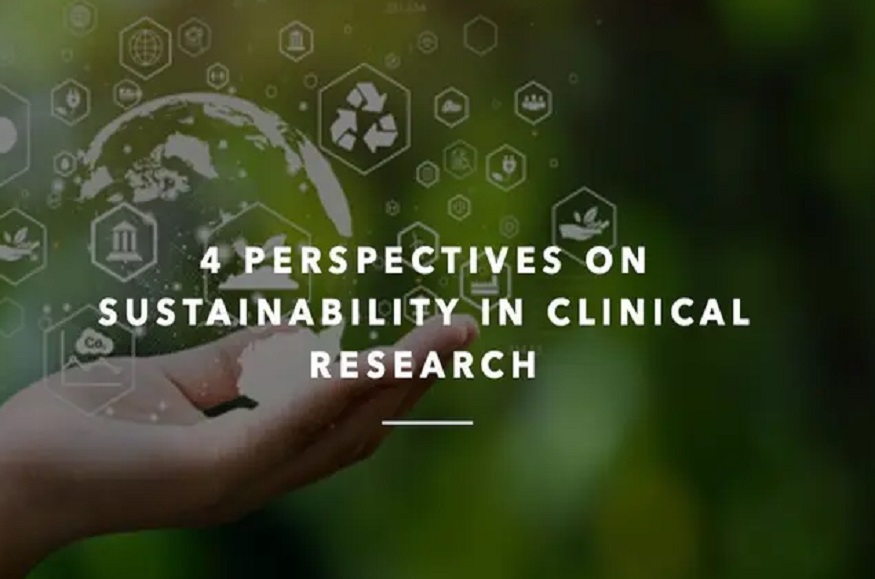
4 Perspectives on Sustainability in Clinical Research
Applied Clinical Trials Online
Sustainability in clinical research is key. As complexity and productivity in the industry continue to rise, so does the need for additional resources. According to a recent IQVIA Institute for Human Data Science report, clinical development productivity rose to its highest level since 2018.
Stakeholders must be keen on how they utilize clinical resources, even with positive trends in productivity and development. With strategic management, industry can ensure the long-term effectiveness of clinical trials and their ability to bring therapies to patients faster.
In this slideshow, Julia Sundari, senior director of clinical design and analytics, IQVIA; Michael Cohen, MSc, MBA, senior director, lead, environmental sustainability, PPD clinical research business of Thermo Fisher Scientific; Robyn Owens, manager, recruitment and engagement, PPD clinical research business of Thermo Fisher Scientific; Bill Sterling, senior director of environmental, health and safety, IQVIA Laboratories; and Bryan Spielman, chief growth officer, Advarra each share a critical component to ensuring the long-term effectiveness of clinical research.
1. Digitization
The movement towards digital in clinical trials is in full swing. Not only can digital solutions address common pain points such as enrollment, long timelines, and protocol optimization, but they can also aid in reducing waste.
Sundari wrote, “Beyond collecting data directly from patients, there are multiple clinical trial activities that traditionally were paper-based for patients that are now available in various digitized formats. Not only are the digital solutions noted ahead designed to reduce patient burdens to trial participation and improve experiences, but they also reduce paper production and related waste:
- Clinical trial materials critical to patient enrollment are available electronically, such as electronic consent forms.
- Sites can now share digital trial kits with patients that include QR codes for more information about the trial instead of paper brochures, posters, and other printed materials.
- Investigator site files and trial master files are also available in electronic forms.
Furthermore, investigational products can be managed remotely through data integration and mobile technologies.
For every digitalization practice the industry adopts, e-waste will also be required to be sustainable, including electronic hardware.”
2. Reducing patient burden
Travel has always been burdensome for patients participating in clinical trials. Typically, patients are traveling further to participate in studies than they are to receive routine care. Extra costs on essentials such as transportation, lodging, and meals can add up quickly.
In an article featured on Applied Clinical Trials, Cohen and Owens shared some strategies on how to reduce patient and planetary burden simultaneously:
- Evaluate virtual or remote visits as a substitute for onsite visits whenever possible. This would involve telemedicine technologies and remote monitoring tools to reduce the need for the physical visit and transportation to the site. Further, leveraging digital technology via eConsent and electronic clinical outcome assessment/eDiaries can significantly reduce paper usage while simultaneously reducing site burden.
- Use home healthcare agencies that utilize technology for efficient routing, as well as electric vehicle (EV) or hybrid vehicles.
- The utilization of wearables with remote monitoring capability by the clinical trial sites helps reduce the need for in-person patient visits, thus reducing the carbon footprint.
- Incorporate lower impact transportation. Encourage and compensate participants for using more environmentally friendly modes of transportation (i.e., walking, public transportation, EVs, or cycling, assuming they are a true option based on geography)
3. Laboratory perspective: Managing resources
There’s no way around the fact that laboratories use a lot of energy. In order to keep productivity high, strategies around how resources are used must be in place.
In a roundtable discussion convened by ACT, Sterling said, “It’s really a challenge in terms of conserving energy in a laboratory. You’ve got a very large need for energy with regards to HVAC systems, fume hoods, clean air, single-use plastics, and so forth.”
To better manage these resources, IQVIA Laboratories partnered with My Green Lab, a nonprofit organization that provides a scored self-assessment survey training on topics such as cold storage, green chemistry, fume hood use, and plug load for equipment.
Sterling continued, “It (partnering with My Green Lab) created a lot of enthusiasm, a roadmap, and a structure for people to latch onto to learn about and engage various sustainability programs and projects. The most important thing is we’ve delivered some real carbon reductions and provided value for our clients.”
4. Streamlining clinical operations
On the operational side of clinical research, resources can be saved by thinking more strategically. Rather than solely focusing on conserving energy, streamlining operational processes such as site selection can have the same effect.
“[…] what we do have is a great deal of data that helps you determine what is the optimal site to perform a clinical trial, who are your best patients, what capabilities do those sites have, so that instead of going to 10 different places to hit all the different experiments that [patients] need to have done, [you discover] the one site that has all of them—so let’s direct trial activity to those places,” Spielman said in the roundtable discussion. “I think using data, using analytics to help improve the operational efficiency of a trial is much better than putting my laptop on low power mode. It’s going to have a lot more of an impact, frankly. And those are some of the ways that we’re thinking about it.”
